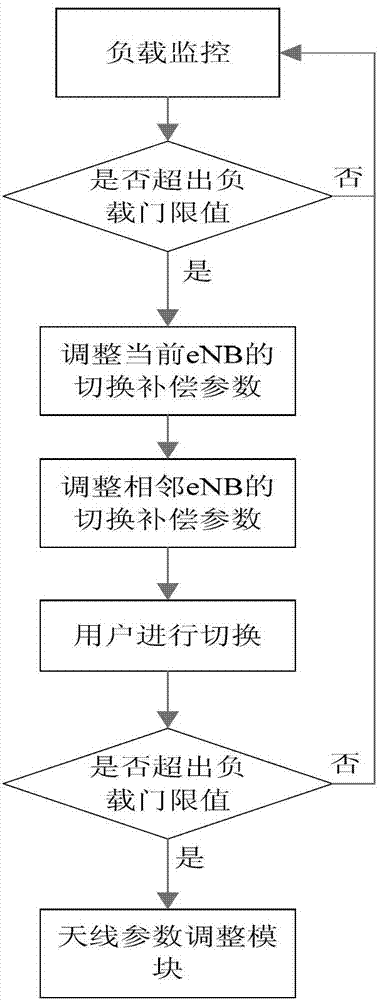Collaborative load balancing method of wireless access network system based on RAN (Residential Access Network) framework
A wireless access network and load balancing technology, applied in wireless communication, network traffic/resource management, electrical components, etc., can solve the problem that the communication quality of edge users cannot be guaranteed, the base station cooperation has a large wireless backhaul overhead, and it is difficult to synchronize radio frequency. and other problems, to achieve the effect of improving wireless resource utilization and performance, no backhaul overhead, and low latency.
- Summary
- Abstract
- Description
- Claims
- Application Information
AI Technical Summary
Problems solved by technology
Method used
Image
Examples
Embodiment Construction
[0022] In the traditional architecture radio access network system, the mobile Internet era is facing the challenges of cost reduction, performance improvement, energy saving and emission reduction. China Mobile has proposed a new radio access network architecture RAN for green evolution.
[0023] Such as figure 2 Shown is a schematic diagram of a RAN-based radio access network system, wherein the RAN-based radio access network system consists of a baseband processing pool, an optical transmission network, and a distributed wireless network. The baseband processing pool is composed of virtual base station clusters, while the distributed wireless network is composed of RRU and mobile users, and PYH / MAC is the physical layer / medium access control layer. RAN has a virtual baseband resource pool management structure, which mainly includes three parts: 1) Distributed wireless network composed of remote radio frequency unit RRU (Remote Radio Unit) and antenna; 2) Optical transmissi...
PUM
 Login to View More
Login to View More Abstract
Description
Claims
Application Information
 Login to View More
Login to View More - R&D
- Intellectual Property
- Life Sciences
- Materials
- Tech Scout
- Unparalleled Data Quality
- Higher Quality Content
- 60% Fewer Hallucinations
Browse by: Latest US Patents, China's latest patents, Technical Efficacy Thesaurus, Application Domain, Technology Topic, Popular Technical Reports.
© 2025 PatSnap. All rights reserved.Legal|Privacy policy|Modern Slavery Act Transparency Statement|Sitemap|About US| Contact US: help@patsnap.com



